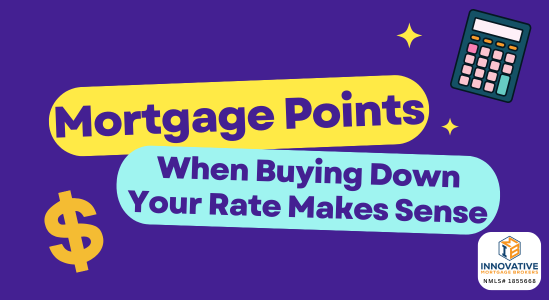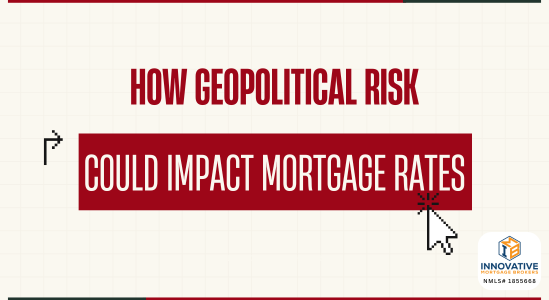How buying down your rate works, when it pays, and when to skip it Paying…
Mortgage Rates and the Fed: What to Expect Next
What a Fed Pause or Rate Cut Could Mean for Your Mortgage This Year
If you’ve been following the news, you’ve probably heard a lot of talk about the Federal Reserve “pausing” or potentially “cutting” interest rates. For most people, that raises one big question: How does this impact mortgage rates?
The answer is… it depends. But understanding what the Fed does, and how that ripples into the mortgage world, can help you make smarter decisions, whether you’re thinking about buying your first home, refinancing, or investing in real estate.
Let’s break it all down.
First, What Does the Fed Actually Control?
The Federal Reserve (or “the Fed”) doesn’t directly set mortgage rates. What it does control is the federal funds rate, the short-term interest rate banks charge each other to lend money overnight. This rate affects things like credit cards, auto loans, and home equity lines of credit (HELOCs).
Mortgage rates, however, are influenced more by longer-term factors, especially the 10-year Treasury yield and investor sentiment about inflation and economic growth.
So why does everyone watch the Fed so closely?
Because when the Fed changes its tone, pausing or cutting rates, it sends a message about the direction of the economy. And that, in turn, affects how mortgage lenders price loans.
What Is a “Fed Pause” and Why Does It Matter?
A Fed pause means the Fed is choosing to keep interest rates unchanged after a period of increases (like we’ve seen in the past two years). This often signals that they’re trying to assess the economy, watching to see if inflation is slowing and if previous rate hikes are doing their job.
For mortgage borrowers, a pause can lead to stability in rates, or even a slight decline. That’s because investors may start to anticipate future rate cuts, which can push longer-term yields, and mortgage rates, down.
What Happens If the Fed Actually Cuts Rates?
This is where things get interesting.
A rate cut is typically the Fed’s way of stimulating the economy when growth is slowing, unemployment is rising, or inflation is under control.
When this happens, mortgage rates usually trend lower, but not always in a straight line.
Here’s how it plays out:
- Investor optimism increases → They buy more bonds → Bond prices rise → Yields (and mortgage rates) fall.
- Lower borrowing costs → More people can afford to buy or refinance homes → Increased demand in the housing market.
Translation: If the Fed cuts rates later this year, we could see lower mortgage rates, which would open up opportunities to lock in better financing, especially for buyers who may have been priced out by higher rates in 2023–2024.
The Role of Inflation (and Why It’s Still a Big Deal)
Inflation is the Fed’s #1 enemy right now.
Even if economic growth slows, the Fed won’t cut rates aggressively unless inflation is clearly trending back toward their 2% target. That’s why mortgage rates have remained somewhat sticky, even as inflation has cooled slightly. The market wants more reassurance that inflation won’t come roaring back.
If inflation keeps falling → Expect downward pressure on mortgage rates.
If inflation ticks back up → The Fed may hold off on cuts or even hike again, keeping mortgage rates elevated.
Why Mortgage Rates Don’t Always Drop Instantly
Even when the Fed cuts rates, mortgage lenders don’t always pass along the savings right away. That’s because lenders factor in:
- Market volatility
- Risk premiums
- Investor demand for mortgage-backed securities (MBS)
In other words, if there’s uncertainty, say, due to a geopolitical conflict or recession fears, mortgage rates might not move much, or may even rise temporarily despite a Fed cut.
So instead of trying to perfectly “time the bottom,” it’s smarter to focus on your long-term affordability and personal financial goals.
What This Means for You (as a Buyer, Homeowner, or Investor)
If you’re planning on buying a home in 2025:
- A Fed pause could stabilize rates and give you more clarity on monthly payments.
- A future rate cut could create a window for better terms, but be ready to act quickly.
If you’re considering a refinance:
- If your current rate is over 7%, a drop in rates could bring major savings.
- A refi might also allow you to consolidate debt or tap into equity more affordably.
If you’re investing in real estate:
- Lower rates could improve cash flow or help with multi-property financing.
- Be aware that a more competitive rate environment may heat up the housing market again.
The Bottom Line
A Fed pause or rate cut doesn’t directly set mortgage rates, but it absolutely influences them.
If inflation continues to ease and economic growth slows, we could see mortgage rates trend lower throughout the second half of 2025. That could create real opportunities for buyers and homeowners alike, but timing alone shouldn’t be the only factor in your decision.
Whether you’re buying, refinancing, or just exploring your options, the most important thing is to stay informed and work with someone who can help you make sense of all the moving parts.
Curious what today’s mortgage options look like for you?
Let’s connect, we are happy to review your situation and see what’s possible.





